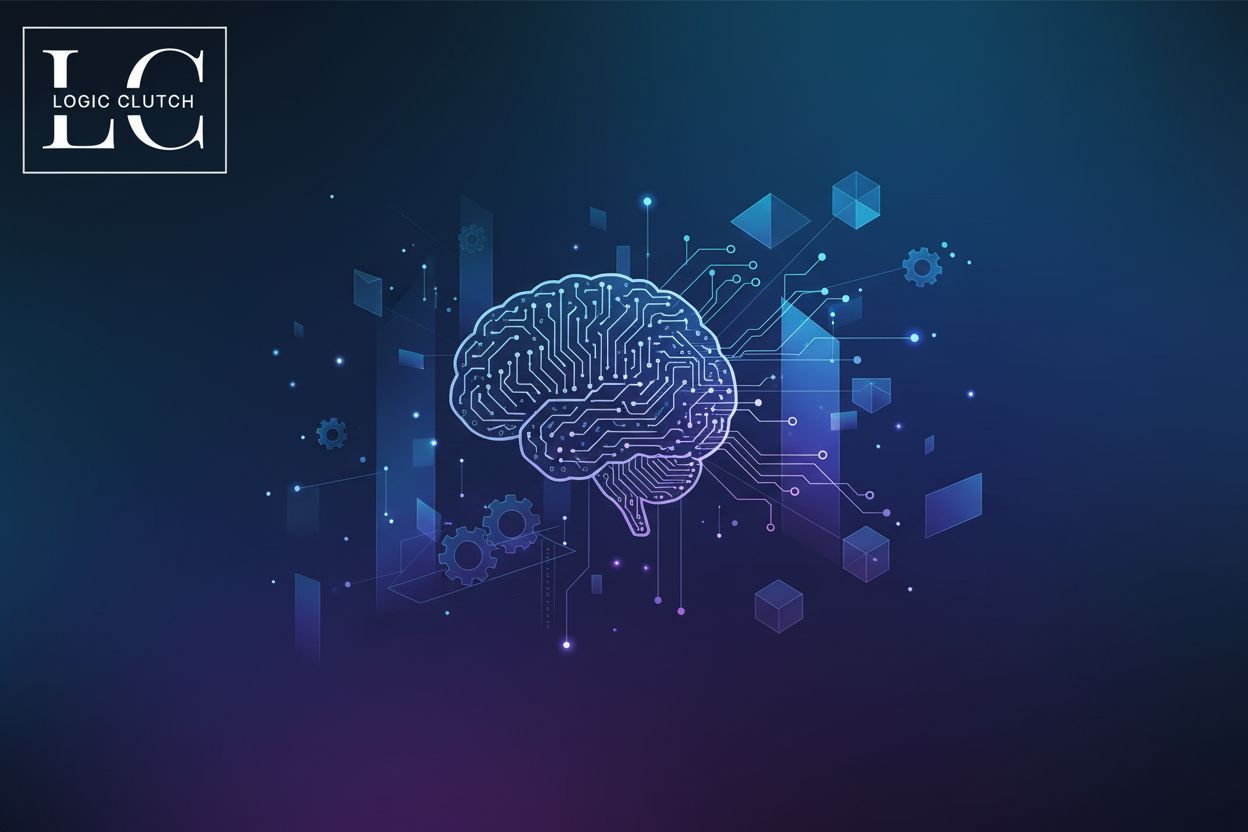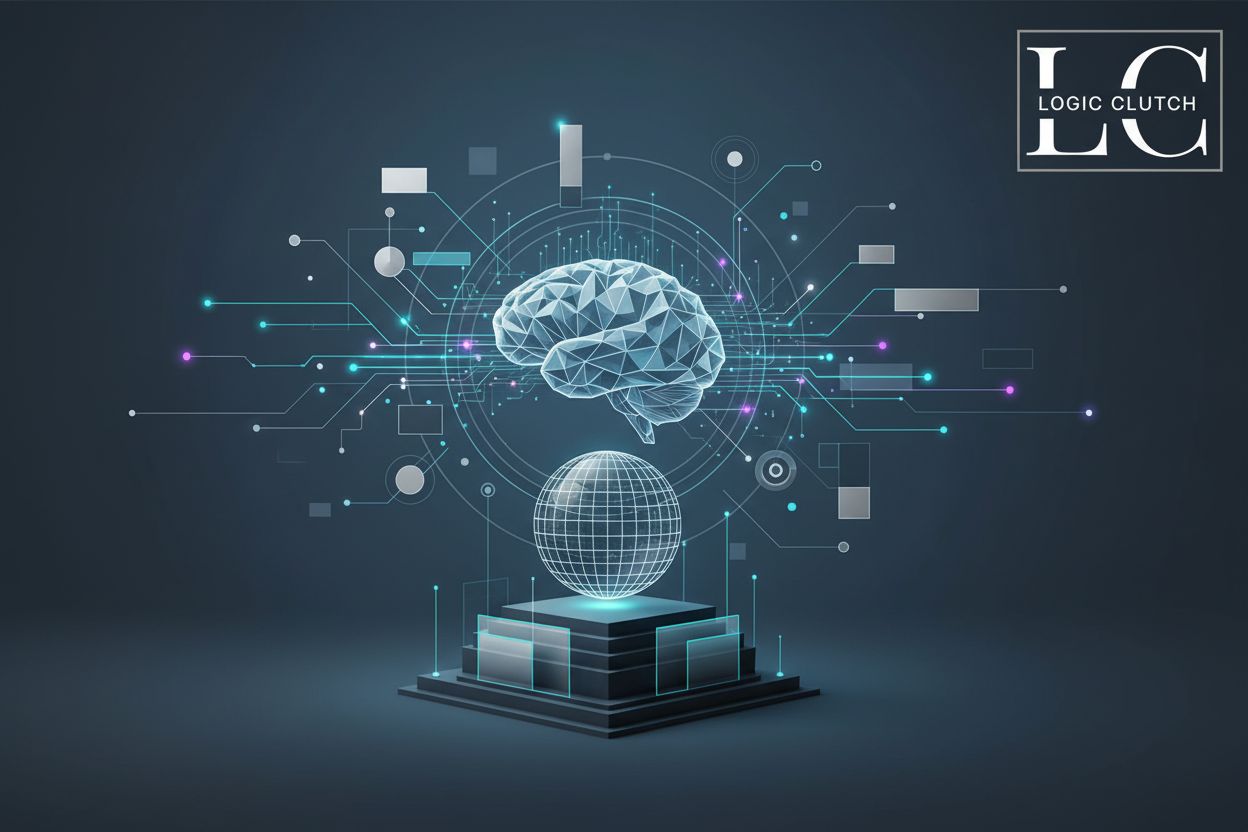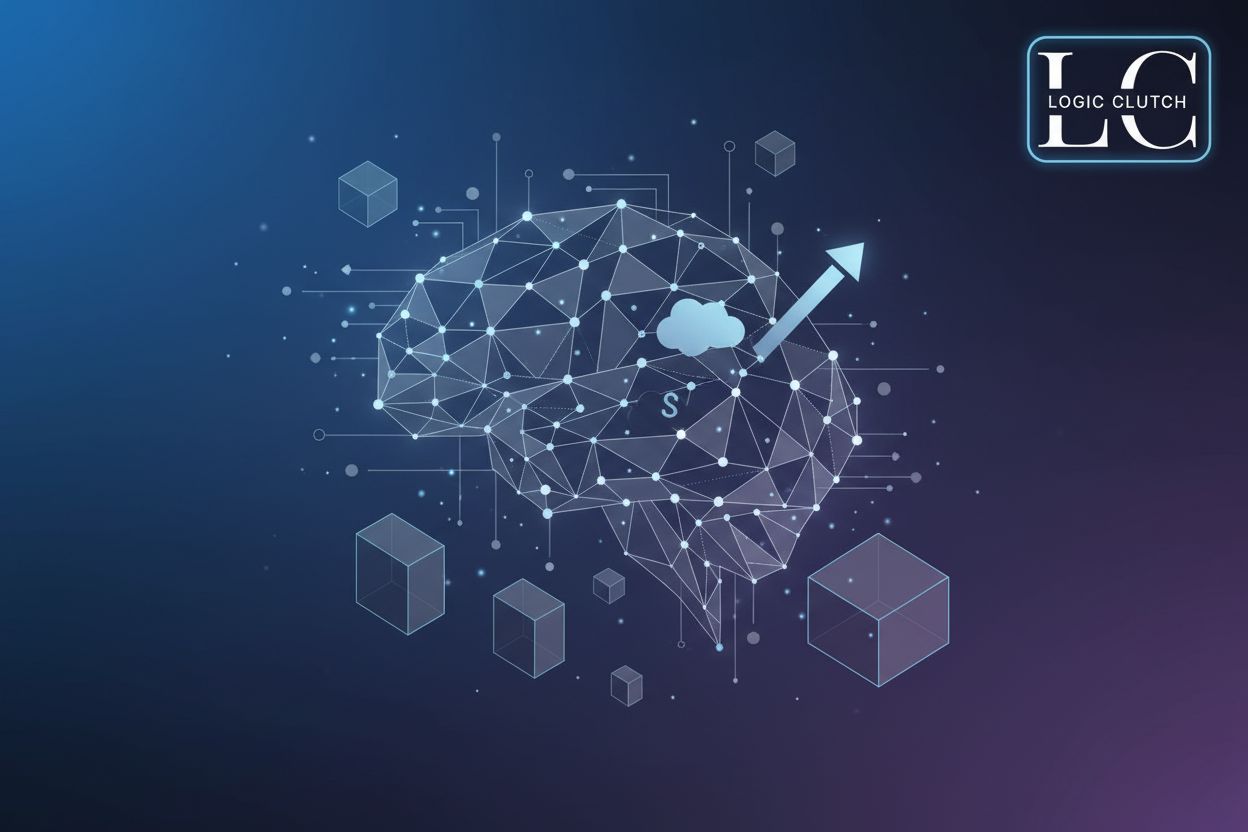Digital Transformation vs. Technology Transformation: Key Differences
TL;DR
Introduction: Untangling Transformation Terminology
Okay, let's dive into this transformation terminology mess – it's easy to get lost, right? I mean, are we talking about slapping some new gadgets on old systems, or are we talking about a full-blown business makeover? It's kinda important to know the difference or else you're gonna end up with a strategy that's, well, just plain wrong.
So, what's the deal? Digital transformation and technology transformation: they sound similar, but they ain't the same thing. Here's the lowdown:
- Digital transformation is about changing how you do business – think rethinking processes, customer experiences, and business models. It's holistic.
- Technology transformation is more focused on what tools you're using – upgrading infrastructure, implementing new software, etc. It's about the tech itself.
- Honestly, companies often mix 'em up, but that's where the problems starts. If your "digital transformation" is just adding tech without shifting your strategy, then you're kinda missing the point.
Why should you care? Because a solid strategy is everything. You don't want to waste time and money on tech that doesn't actually help you achieve your goals. As Yokogawa notes, it's about using technology to empower people, optimize process and automate systems to radically reorient its business performance.
And where does Salesforce come in? Well, tools like Salesforce CRM and ai analytics can be huge enablers of both kinds of transformation, but you gotta know what you're trying to do before you start plugging stuff in.
Up next, we'll get into the nitty-gritty of what digital transformation really means.
Defining Digital Transformation: A Holistic View
Digital transformation: it's not just a buzzword, it's a whole new way of thinking about business. Are companies really changing how they operate, or are they just slapping some tech on top of old processes?
Digital transformation is about more than just technology; it's about a fundamental shift in how a business operates. We're talking rethinking processes, customer experiences, and even the company culture itself. Epilogue Systems notes that it's a "broader concept that involves a fundamental change in how businesses operate."
- Customer experience is key: It's about creating a seamless, personalized journey for your customers. Think about how banks have shifted from branch transactions to online banking, making life easier for everyone.
- New revenue streams: Digital transformation can open up entirely new ways to make money. Spotify, for example, completely disrupted the music industry by offering streaming services instead of physical CDs, as noted by GlobalSign.
- Culture shift: It requires a change in mindset across the entire organization. People need to be willing to embrace new ways of working and be open to continuous learning.
So, where does Salesforce come in? Well, it can be a central platform for managing customer relationships in this new digital world. It's not just a database, but a tool for creating personalized experiences and automating key processes.
- Personalized experiences: Salesforce can help you gather and analyze customer data to create tailored interactions. Imagine getting product recommendations based on your past purchases – that's Salesforce in action.
- Automation is your friend: It can automate marketing, sales, and service processes, freeing up your team to focus on more strategic tasks. Think about automated email campaigns or chatbots that handle basic customer inquiries.
Consider a healthcare provider using Salesforce to manage patient interactions. They could use it to schedule appointments, send reminders, and even provide personalized health recommendations based on patient data. This not only improves the patient experience but also streamlines internal operations.
So, digital transformation is a big deal, and it's not just about the tech. It's about people, processes, and a whole new way of thinking. Next up, we'll look at the key differences between digital transformation and tech transformation.
Understanding Technology Transformation: Upgrading the Infrastructure
So, tech transformation – it's not just about throwing money at the latest gadgets, right? It's more strategic than that, more about building something solid. Let's break it down, because honestly, it can get confusing.
Technology transformation is basically upgrading your company's IT backbone. Think of it as reinforcing the foundation of your house before you add a fancy new extension.
- This is all about making sure your IT systems are up to snuff; efficient, scalable, and secure. No one wants a system that crashes every five minutes or can't handle the workload, right?
- Cloud migration is a biggie. Moving stuff to the cloud can save a ton on hardware costs, increase agility, and give you better access to data. Plus, it's often more secure than keeping everything on-premise.
- Cybersecurity? Non-negotiable. Enhancements like multi-factor authentication and threat detection systems are crucial in today's world. You really don't want to be the next company in the headlines for a data breach.
But technology transformation isn't just about hardware and software. It's also about making those systems intelligent. That's where ai and analytics come in - they add a layer of smarts to your existing infrastructure.
- ai and analytics tools can give you insights for better IT operations, which is kinda like having a super-smart mechanic constantly monitoring your car's engine. They can predict when something might break, so you can fix it before it becomes a major problem.
- Predictive maintenance is a prime example. Instead of just waiting for equipment to fail – which is always at the worst time – you can use data to predict when it needs servicing. This can save a ton of money and prevent nasty surprises!
- Automated threat detection is another key benefit. ai can analyze network traffic and user behavior to spot anomalies that might indicate a cyberattack. It's like having a super-vigilant security guard who never sleeps.
So, technology transformation is about more than just buying new stuff. It's about building a smarter, stronger, and more secure it infrastructure that can support your business goals. Now, let's dive into how all this tech can actually drive digital transformation.
Key Differences: A Side-by-Side Comparison
Okay, so you're probably wondering how digital transformation and tech transformation really stack up, right? It's easy to think they're just different sides of the same coin, but trust me--there's more to it than that.
Digital transformation, let's be real, it's enterprise-wide. It touches everything, from customer service to supply chains. Think of a massive retail chain revamping its entire business model to focus on e-commerce and personalized shopping experiences. They are not just adding a few apps; they are changing the entire game.
- Technology transformation? It's more of an IT-focused thing. It's about optimizing the tech infrastructure to support business goals. Like, a bank upgrading its cybersecurity systems to protect customer data and comply with regulations.
- The objectives are different, too. Digital transformation aims for business model innovation. It's about finding new ways to create value. Whereas, technology transformation is all about IT optimization. It's about making existing systems run better and more efficiently.
Here's a quick visual to get you oriented.
Digital transformation can't happen without a cultural shift. You need employees who are ready to embrace change, experiment, and put the customer first. It's like turning a battleship, slow at first, but powerful once it gets going.
- You need agility, innovation, and a customer-centric mindset. Imagine a healthcare organization encouraging doctors and nurses to use telehealth platforms and collaborate on patient care plans remotely. It requires a willingness to try new things and break down old silos.
- Tech transformation? Not so much. Sure, it might require it teams to learn new skills, but it doesn't necessarily change the whole company culture. It's more about upgrading the toolkit than changing the carpenter.
Digital transformation needs ceo and executive leadership to drive the vision. They set the tone and make sure everyone's on board like a conductor leading an orchestra, they need to make sure everyone is playing the same song.
- Tech transformation relies more on the cio and IT leaders to make things happen. They're the tech experts, so they decide what systems to upgrade and how to implement them. It's more about technical know-how than strategic vision.
- Ideally, you want a shared vision, though. Business leaders need to work with IT leaders to make sure the tech supports the business goals. Otherwise, you end up with shiny new tools that nobody knows how to use.
As Yokogawa puts it, digital transformation is about using tech to "empower people, optimize processes, and automate systems." It's a holistic approach that requires buy-in from the top down, and collaboration across all levels of the organization.
Alright, now that we've sorted out the key differences, let's get into how these transformations actually affect your business processes.
The Interplay: How Technology Transformation Supports Digital Transformation
Okay, so you've got all this new tech... now what? It's not just about having the coolest gadgets; it's about making them actually do something useful, right? That's where tech transformation starts fueling digital transformation.
A robust IT infrastructure acts like the bedrock for your digital ambitions. Think about it: if your systems are always crashing, how can you possibly roll out fancy new customer experiences? A solid foundation, with things like cloud services and apis, is key.
Technology transformation is the thing that provides the actual building blocks. Cloud services offer the scalability and agility you need, while apis allow different systems to talk to each other, which is crucial for things like personalized customer service.
Consider a retailer aiming to boost customer service with a fancy chatbot. Without a robust backend and seamless data flow, that chatbot's gonna be about as useful as a screen door on a submarine. You need a tech transformation to support that goal.
ai isn't just a buzzword; it's a game-changer for digital transformation, especially when baked into platforms like Salesforce CRM. It's like giving your CRM a brain boost.
Take Salesforce Einstein, for example. It's ai smarts can give you predictive analytics and personalized recommendations, which ain't just cool; they're powerful. Imagine sales reps knowing exactly which leads to prioritize or customers getting product suggestions they actually want.
These ai-powered features helps improve sales productivity, making customer interactions more meaningful, and, ultimately, helps you achieve better business outcomes.
So, technology transformation isn't just about shiny new toys. It's about creating a springboard for innovation, especially when you start mixing in some ai magic. Next up, we'll see how to wrangle your data for maximum impact.
Case Studies: Real-World Examples
Alright, so you wanna see how this digital transformation stuff actually plays out? It's not just theory, people are really doing this, and some are doing it well. Let's take a look.
Ever heard of Logic Clutch? They're an enterprise tech consulting firm that specializes in Master Data Management, Salesforce CRM, ai analytics, and even custom dev. What's cool is that they don't just throw tech at problems; they really get what you're trying to do.
- Imagine a scenario where a client was struggling to differentiate btw digital and tech transformation. Logic Clutch stepped in and helped 'em define their goals, then implemented a Salesforce CRM solution that actually drove business results.
- Master Data Management? That's their bread and butter. They can help you wrangle your data so it's actually useful, and not just a bunch of numbers sitting in a database. It's all about data intelligence.
Okay, so Logic Clutch is cool, but what about everyone else? I mean, how does this stuff work in the real world, in other industries?
- Consider a healthcare provider using Salesforce to manage patient interactions. They can schedule appointments, send reminders, and even provide personalized health recommendations based on patient data. It not only improves the patient experience but also streamlines internal operations.
- Or think of a retailer using ai to personalize product recommendations. Salesforce Einstein, for example, can give you predictive analytics and personalized recommendations, which ain't just cool; they're powerful. Imagine customers getting product suggestions they actually want.
So, you've got some examples, now what? Well, next up we'll get into to how you wrangle your data for maximum impact.
Avoiding Common Pitfalls
Alright, so you're revamping your digital strategy, huh? That's great, but trust me, it's easy to stumble if you don't watch out. I've seen companies pour tons of money into tech only to end up with disgruntled employees and zero real change.
Seriously, you can have the best tech in the world, but if your people aren't on board, you're sunk. It's not just about training them on new software, it's about shifting the entire organizational culture.
- You need buy-in from the top down, otherwise, folks will just revert to their old ways. Think about it: if the CEO isn't championing the change, why should anyone else?
- Encourage innovation and collaboration; create a safe space for people to experiment and fail without fear of punishment. Cause, let's be honest, not everything's gonna work the first time.
Also, a surprising amount of companies don't have a clear idea of what they want to achieve or how they are gonna measure it. It's like setting off on a road trip without a destination.
- Set clear, measurable goals from the get-go. What do you want to improve? Customer satisfaction? Revenue growth? Operational efficiency? Spell it out in plain English.
- Use kpis (key performance indicators) to track your progress. Don't just assume things are going well; you need hard data to back it up.
- Remember, what gets measured, gets managed!
So, before you dive in, ask yourself:
- Are we addressing the cultural aspects of this change?
- Do we have clear objectives and metrics to measure success?
If you can answer "yes" to both of those, you're already ahead.
Now, what's next? Well, once you're clear on your goals and have the right mindset, you'll need to wrangle your data for maximum impact.
Conclusion: Choosing the Right Path for Your Enterprise
Alright, wrapping things up – which path should you actually take? It's like choosing between a scalpel and a complete overhaul, right?
- First off, remember the core difference: digital transformation is a top-to-bottom rethink of how you do business, while technology transformation is more about upgrading the tools you use. Think of digital transformation as changing the entire recipe, while tech transformation is just getting a better oven.
- Before you dive in, really look at what your enterprise needs. What are you hoping to achieve? Seriously. It's not just about chasing the latest shiny object; it's about aligning your transformation strategy with your core business goals. Otherwise -- you are just wasting money.
- Don't forget the people side of things. As mentioned earlier, digital transformation needs a cultural shift, you need your employees to be on board and ready to embrace change. Tech transformation? Not as much, but you still need to make sure your IT teams have the skills they need.
Salesforce CRM and ai? Huge enablers, no doubt. But they're not magic wands. They're tools, and like any tool, they're only as good as the plan you've got for using them.
- Think of Salesforce as your central hub, connecting all your customer data and processes. It's not just a database; it's a platform for creating personalized experiences.
- And ai, like Salesforce Einstein? It's the brains of the operation, helping you analyze data, predict trends, and automate tasks.
- Put 'em together, and you've got a powerful combo for both kinds of transformation. But you gotta know what you're trying to do first.
So, yeah – digital transformation and technology transformation: different paths, different goals. Choose wisely, and remember that the best strategy is the one that aligns with your enterprise's unique needs.
And with that, you're armed with the knowledge to make an informed decision. Good luck out there!






